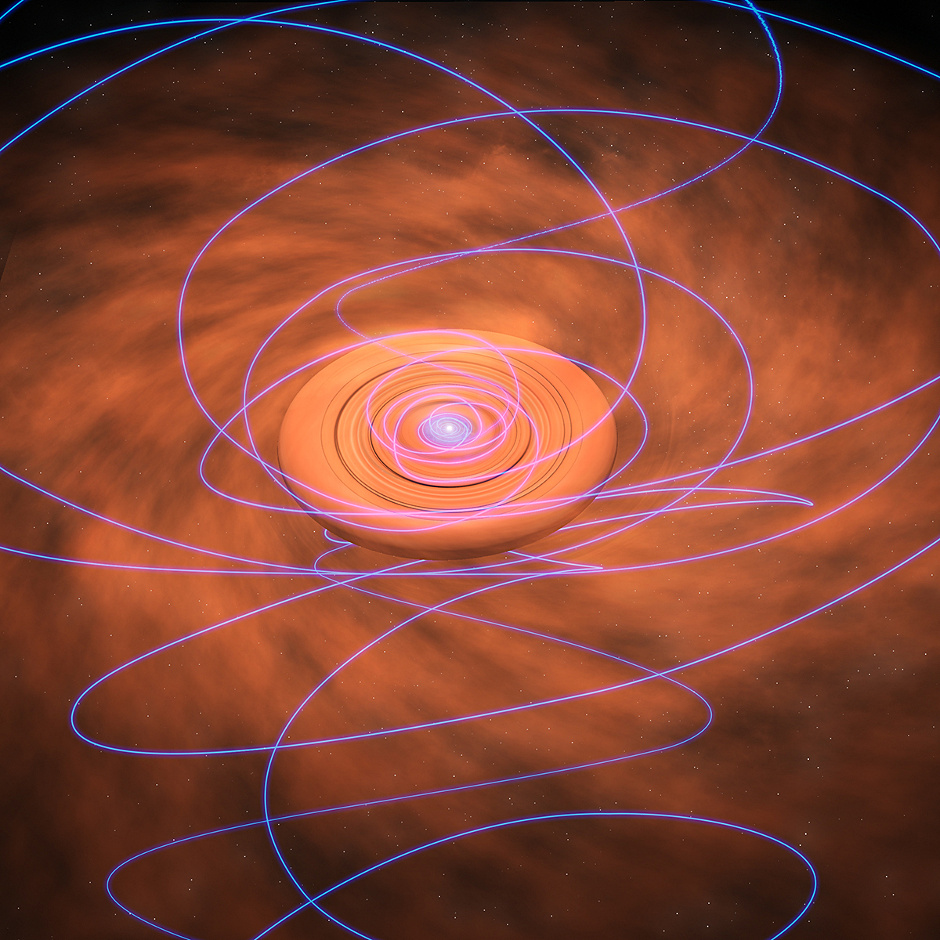
The scientists studied a young protostar about 750 light-years from Earth in the constellation Perseus. Their observations, made in 2013 and 2014, measured the alignment, or polarisation, of radio waves emitted by material, mostly dust, falling into a burgeoning disc orbiting the young star. The polarisation information revealed the configuration of magnetic fields in this region near the star.
“The alignment of magnetic fields in this region near young stars is very important to the development of the discs that orbit them. Depending on its alignment, the magnetic field can either hinder the growth of the disc or help funnel material onto the disc, allowing it to grow,” said Leslie Looney, of the University of Illinois at Urbana-Champaign.
As material from the envelope of dust and gas surrounding the young star falls inward toward the rotating disc, it is likely to drag magnetic field lines with it. Because of this, the structure of the magnetic field near the star will become different from the field’s structure farther away.
“Our VLA observations are showing us this region, where the change in shape of the magnetic field is taking place,” said Erin Cox, also of the University of Illinois Urbana-Champaign. The observations, she added, produced the first images at wavelengths of 8 and 10 millimetres to show the polarisation near a protostar.
The observations also indicated that millimetre- to centimetre-sized particles are numerous in the disc surrounding the young star. Since the protostar is only about 10,000 years old — very short in astronomical timescales — this may mean that such grains form and grow quickly in the environment of a still-forming star.
The star, dubbed NGC 1333 IRAS 4A, is one of two young stars forming within a common envelope of dust and gas. The disc around it contains material with a total mass more than twice that of our Sun.
Cox and Looney are part of an international team of astronomers studying the protostar. The scientists report their results in the Astrophysical Journal Letters.



